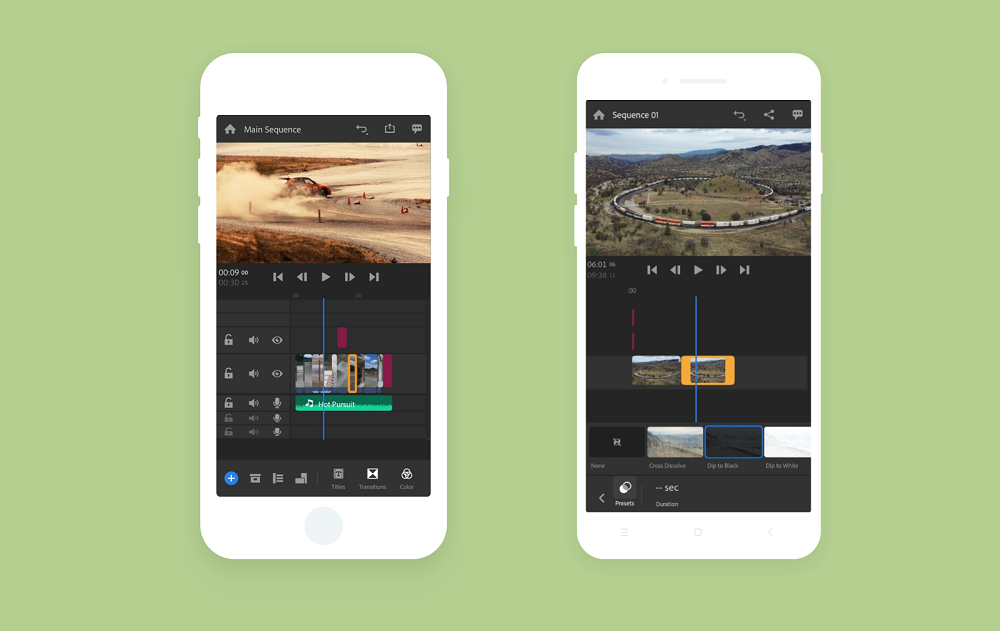Video content gets more popular each year. Cisco forecasts that 79% of the world’s internet traffic will consist of video traffic. It’s the right time to get into a video editing app development since these apps play a huge role in popularizing videos.
However, developing any kind of software is always associated with certain difficulties and challenges that developers must accept and overcome. Video editing app development is no exception. It comes with many different nuances that should be considered both developers and app owners. Let’s take a closer look at them.
First, let’s start with hardware limitations that may bring some difficulties in video editing app development.
Hardware Limitations that Should be Taken into Account
The main difficulties that can be caused by the filling of different devices are various restrictions on recording slow-motion video. For example, iPhones have always been at the forefront in this aspect, while phones based on the Android operating system were inferior in this quality. However, recently, Android smartphones have gradually caught up and even surpassed iPhones in this aspect.
For example, the recent flagship Samsung S20 can record video at 960 frame rates per second at 1080p. The iPhone lags behind by four times in these parameters. iPhone Xs records slow-motion video in 1080p at a frame rate of just 240 fps.
The rest of the Android smartphones also keep up with the Samsung index. For example, the budget smartphone Xiaomi can also shoot slow-motion videos with the same frame rate and the same resolution as Samsung.
So if your application is aimed at an audience that will actively use slow motion and they need this feature to work perfectly, it’s better to stick to the Android platform.
Android Development Nuances
Difficulties of video editing app development for Android are tied with managing video rendering performance and developing features absent in pre-made solutions.
Video Rendering Performance
To fulfill this task, there are two tools made for the Android platform: FFmpeg and Transcoder. The difference between these tools lies in their performance and set of features. FFmpeg has excellent functionality, but performance is not on the highest level. Meanwhile, Transcoder has many missing features, but its over-the-top performance smoothes out the lack of features.
Undo/Redo Actions and Their Management
The main pitfall with these actions is that developers must figure out which actions users can cancel. Moreover, all these actions must be united in a single mechanism that works like clockwork.
Various Filters
To add sepia, monochrome, and so on, there are many pre-made solutions on the market. But there is a chance when needed filters are not in a pre-made solution. In this case, developers must develop them from scratch.
iOS Development Nuances
How to make an app for iPhone and avoid all pitfalls? First of all you need to know what issues you may face. iOS development process suffers from different issues. Developers must work-out the editing process precisely.
Image and Video Orientation
Managing image and video orientation is the main headache of the iOS video editing app development process. Content may turn over, which can be a critical issue when the Android app version development goes along with the iOS version.
Merging Video and Pictures
In this process, aspect ratios are everything. To observe them, developers must work with every pixel, so the watermark or picture looks nice on the screen and not being superimposed.
Audio Track and Volume Level
Developing a precise volume level setting can be tricky. This process is the main iOS development pitfall that should be considered.
Wrapping Up
We’ve discovered all technical and hardware pitfalls that developers may face during video editing app development. Even though these problems may deliver some inconveniences during development, these pitfalls are not insurmountable. From now on, you’re armed with knowledge and ready to dive into video editing app development.
Author’s bio
Vitaly Kuprenko is a writer for Cleveroad. It’s a web and mobile app development company with headquarters in Ukraine. He enjoys writing about technology and digital marketing.
